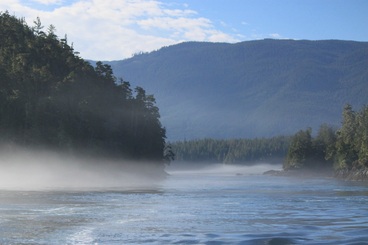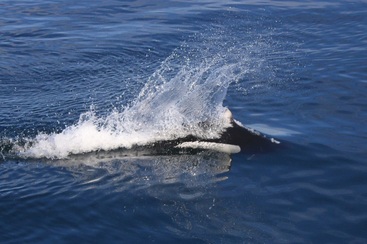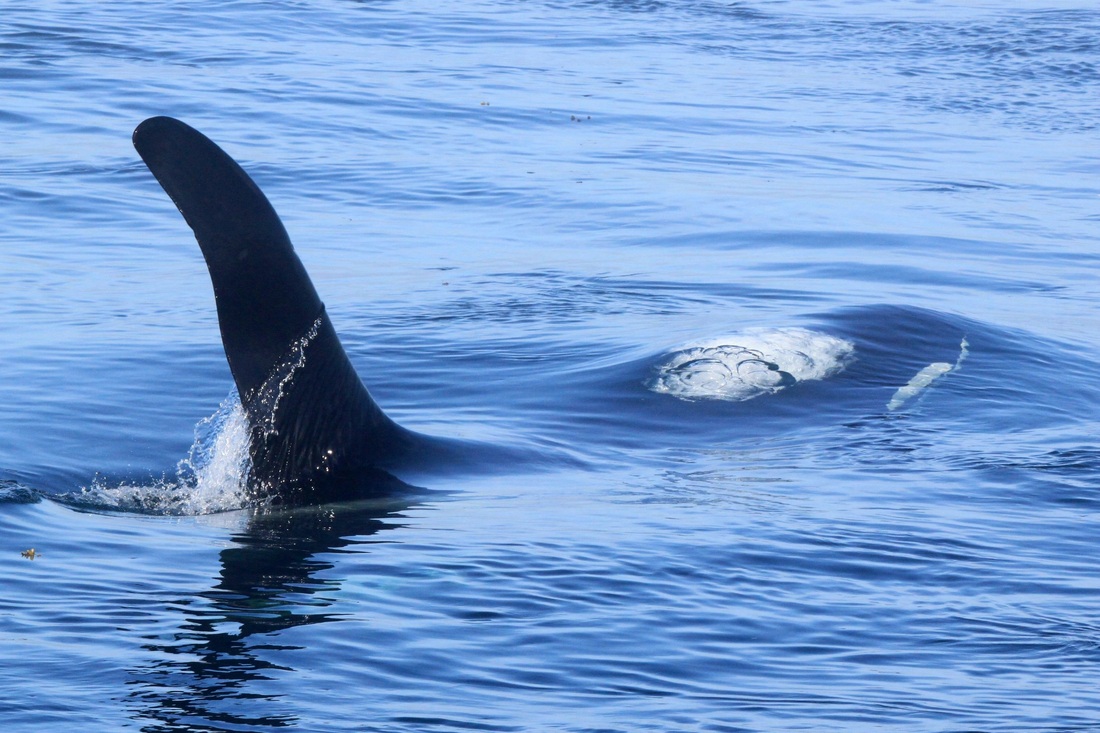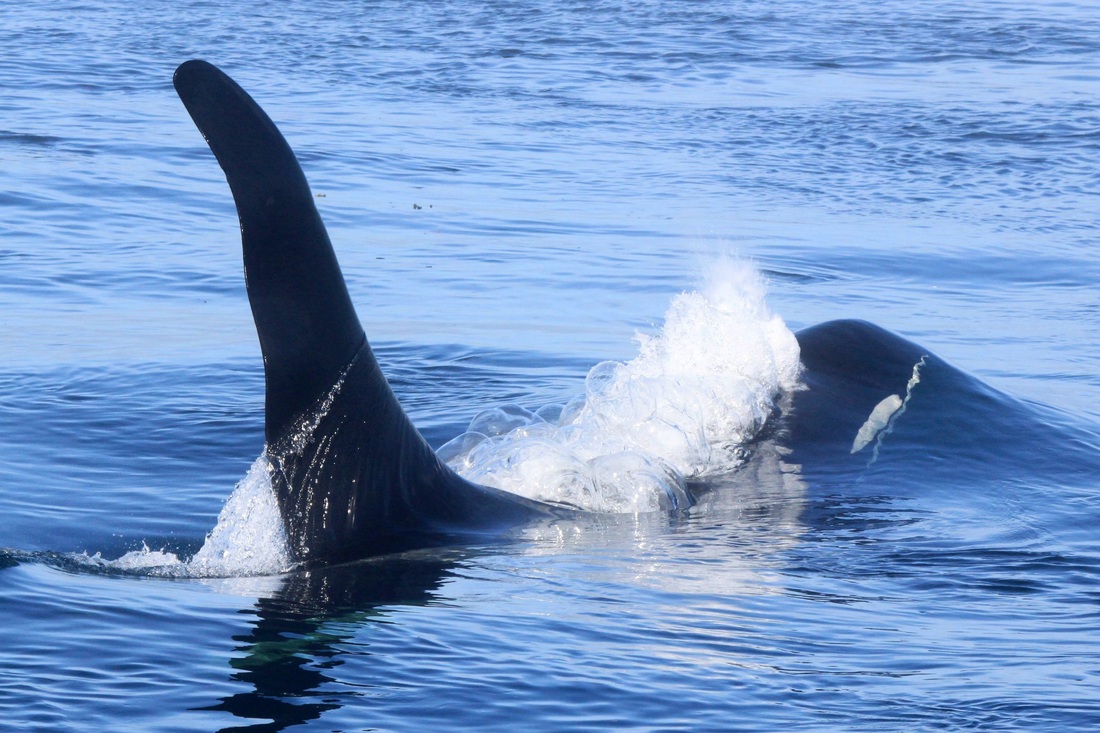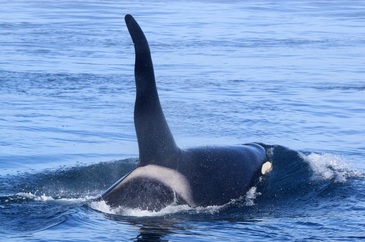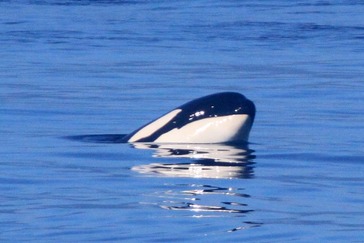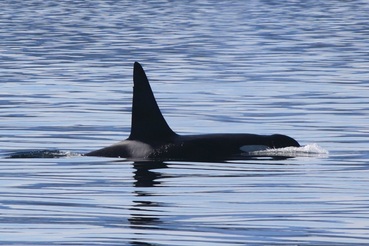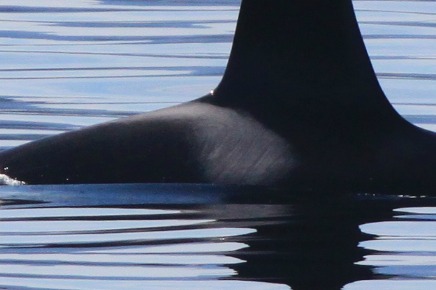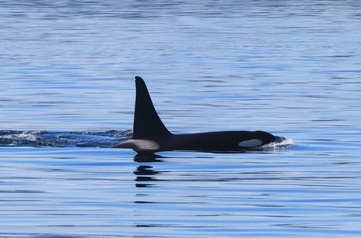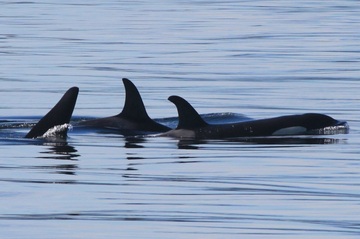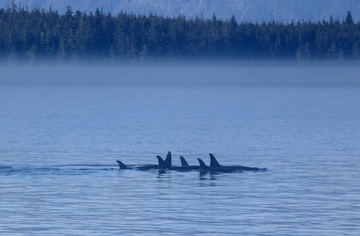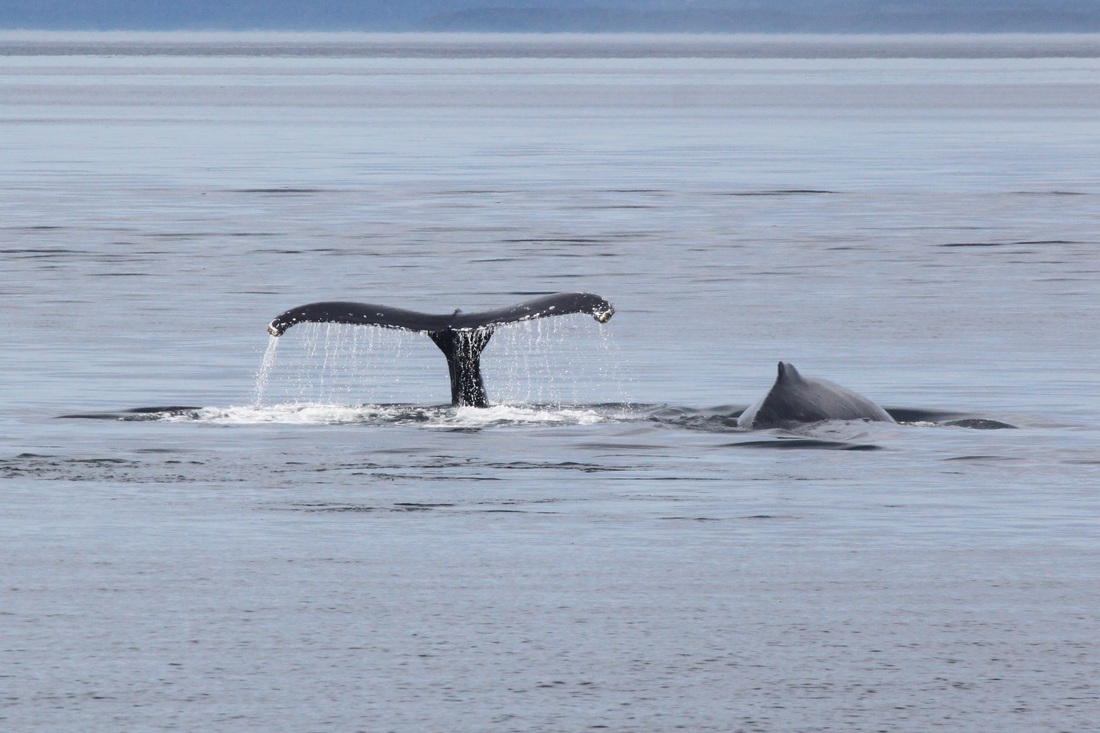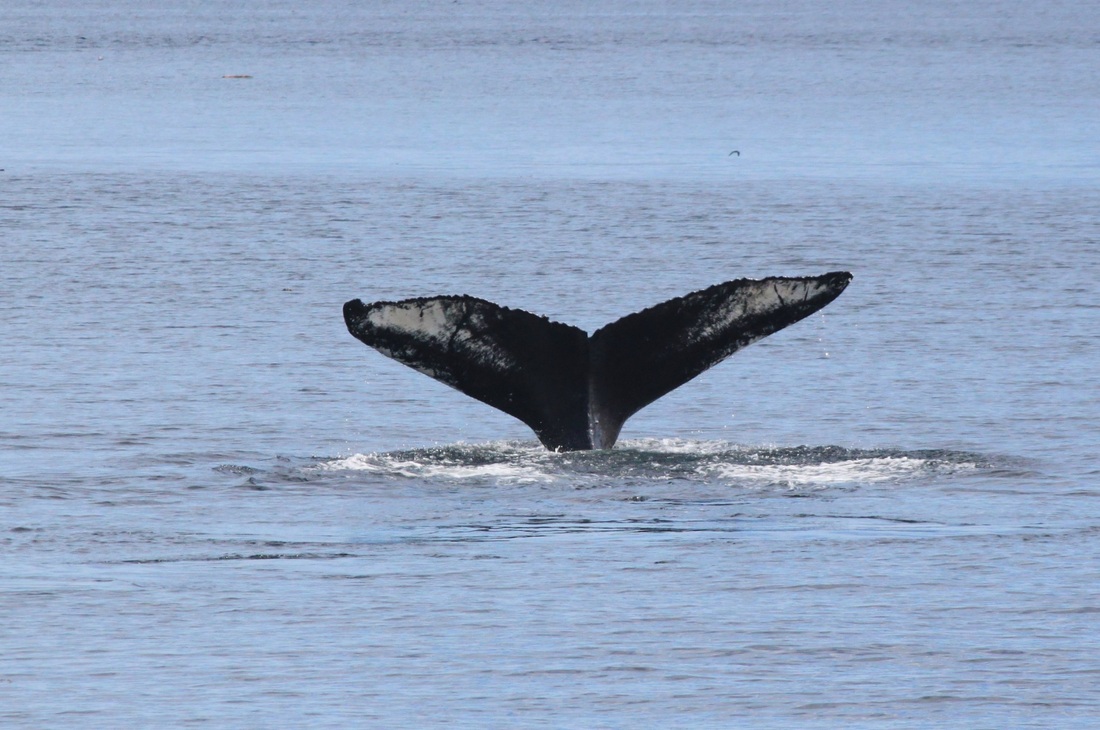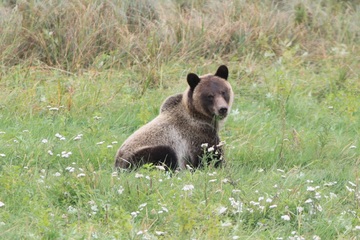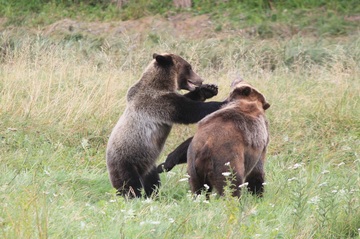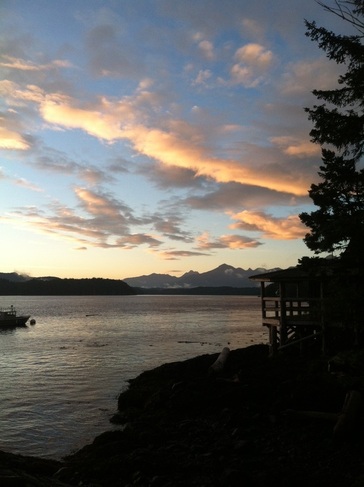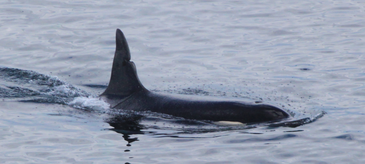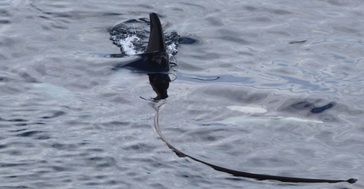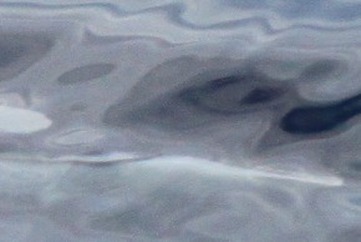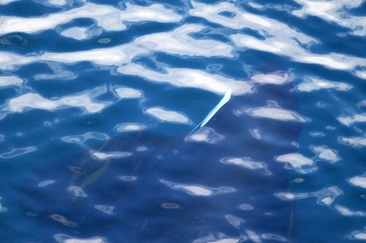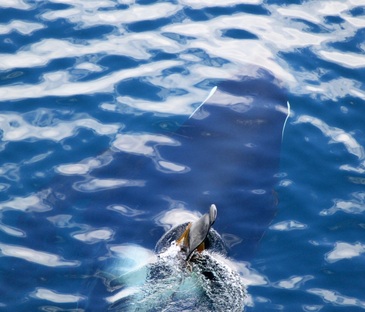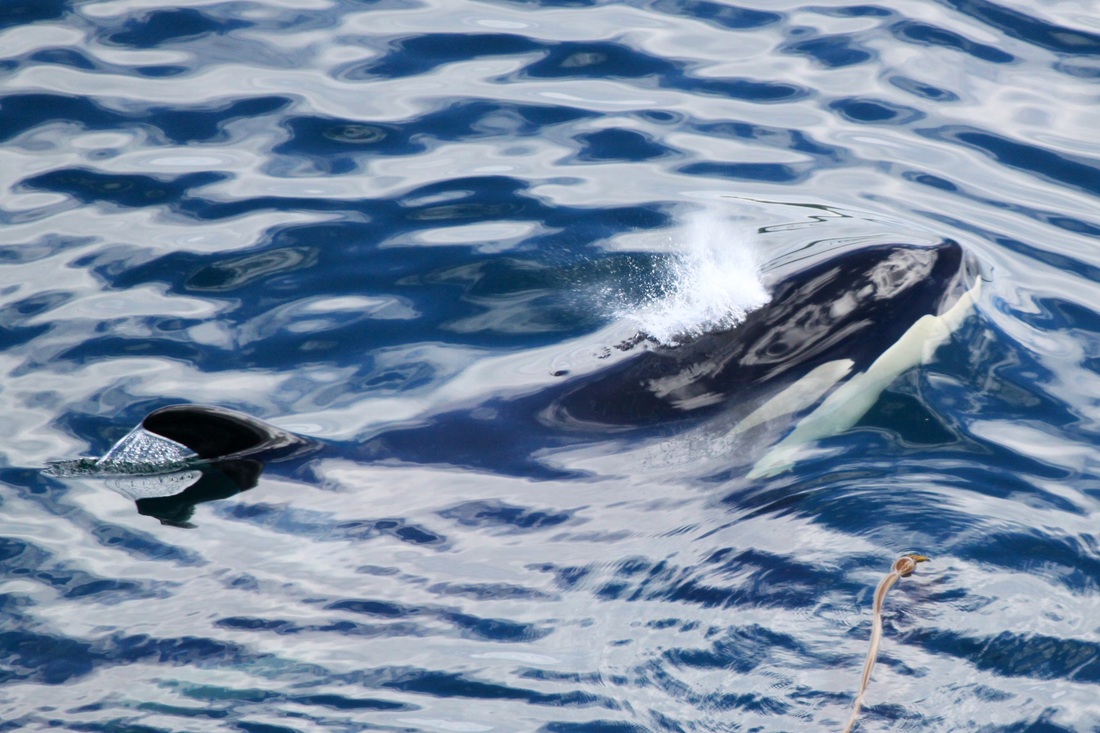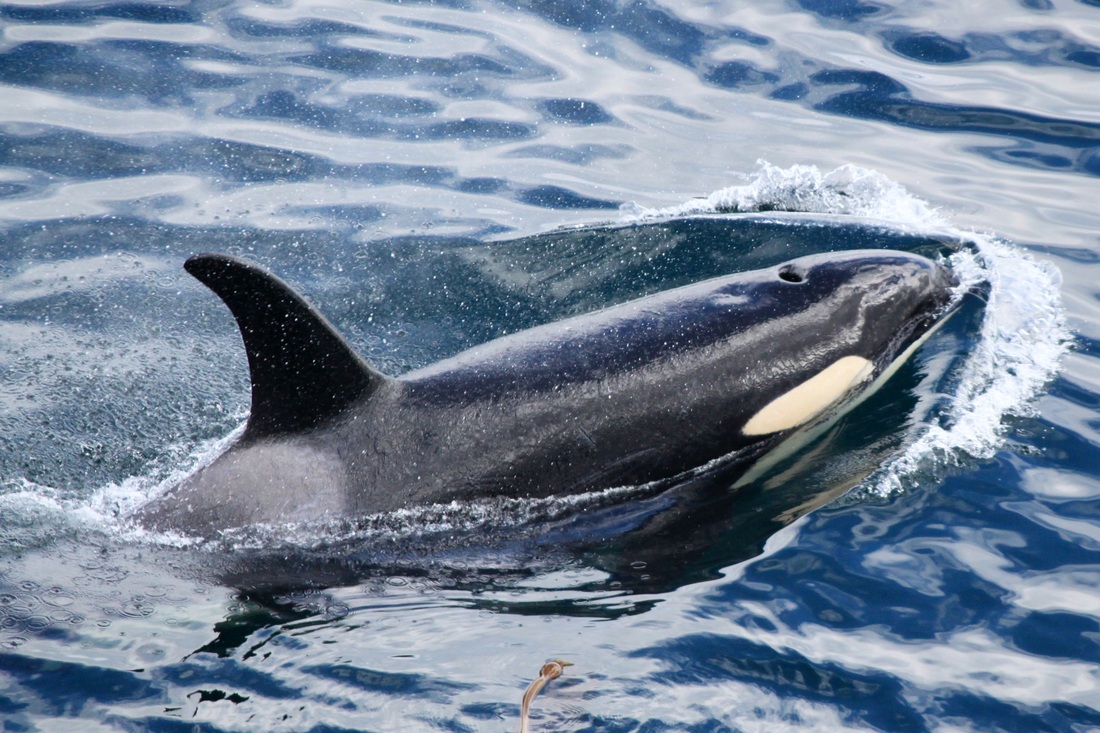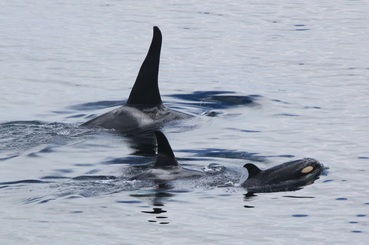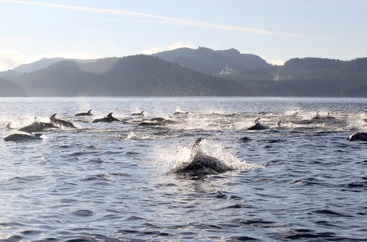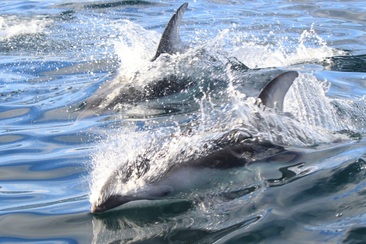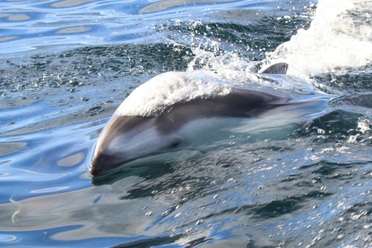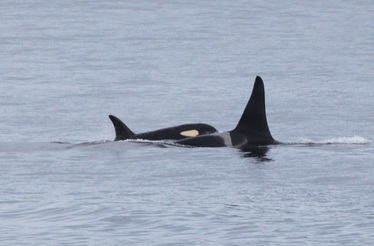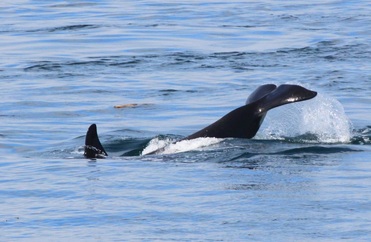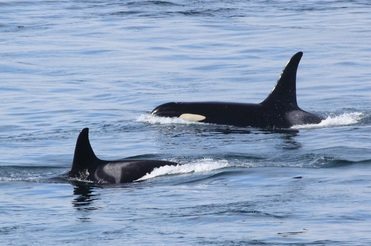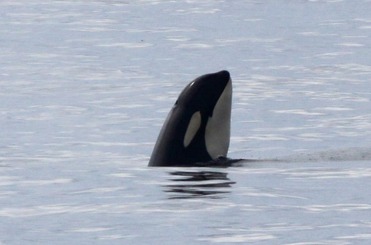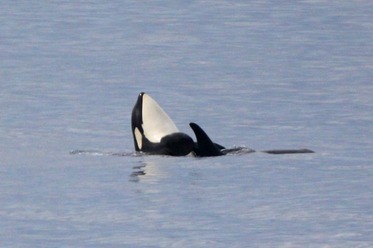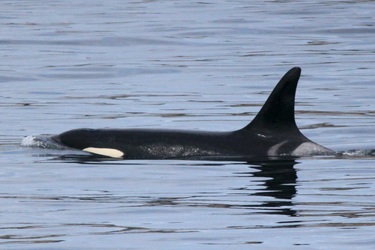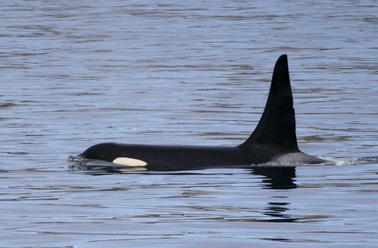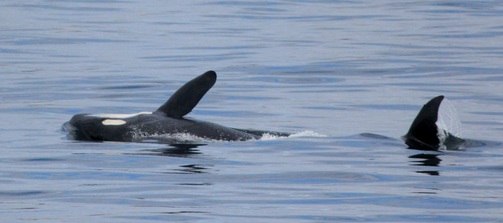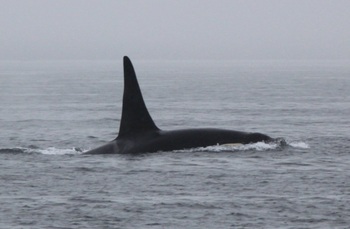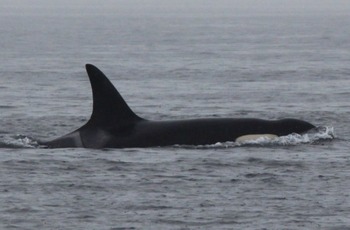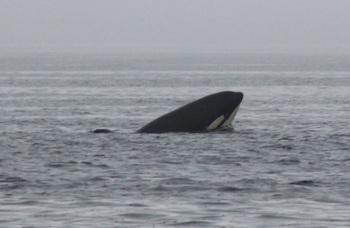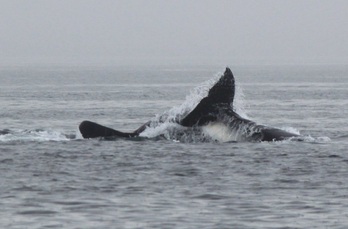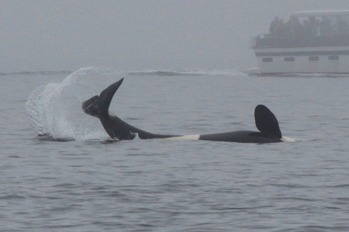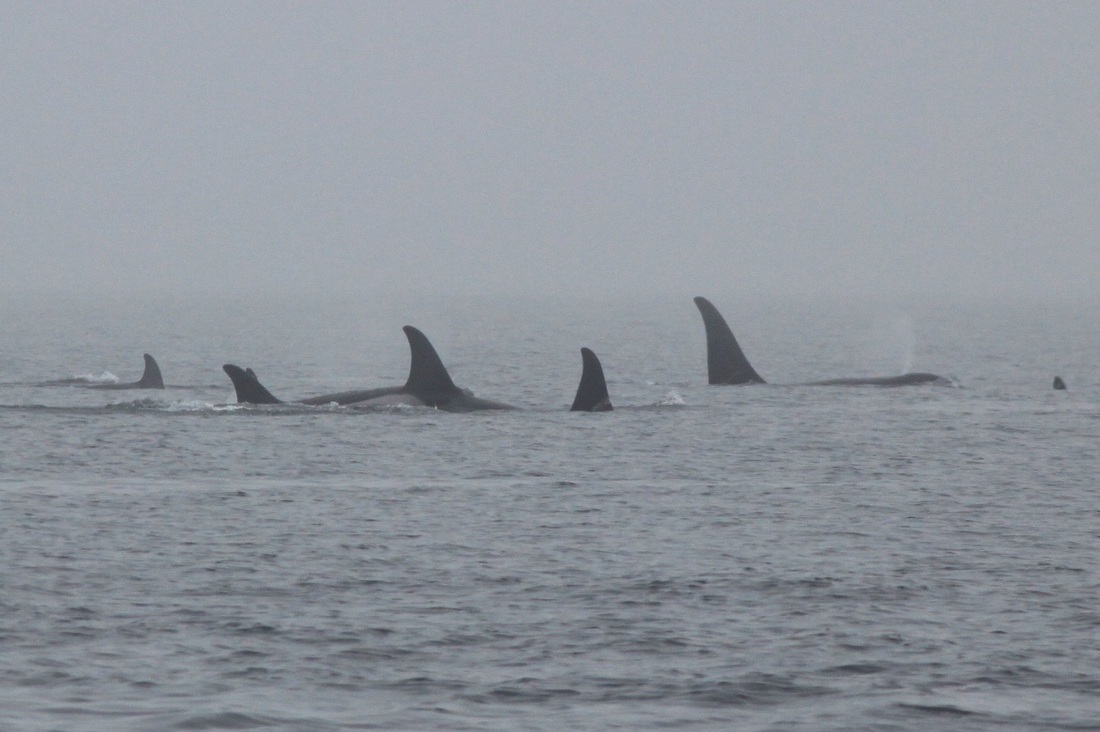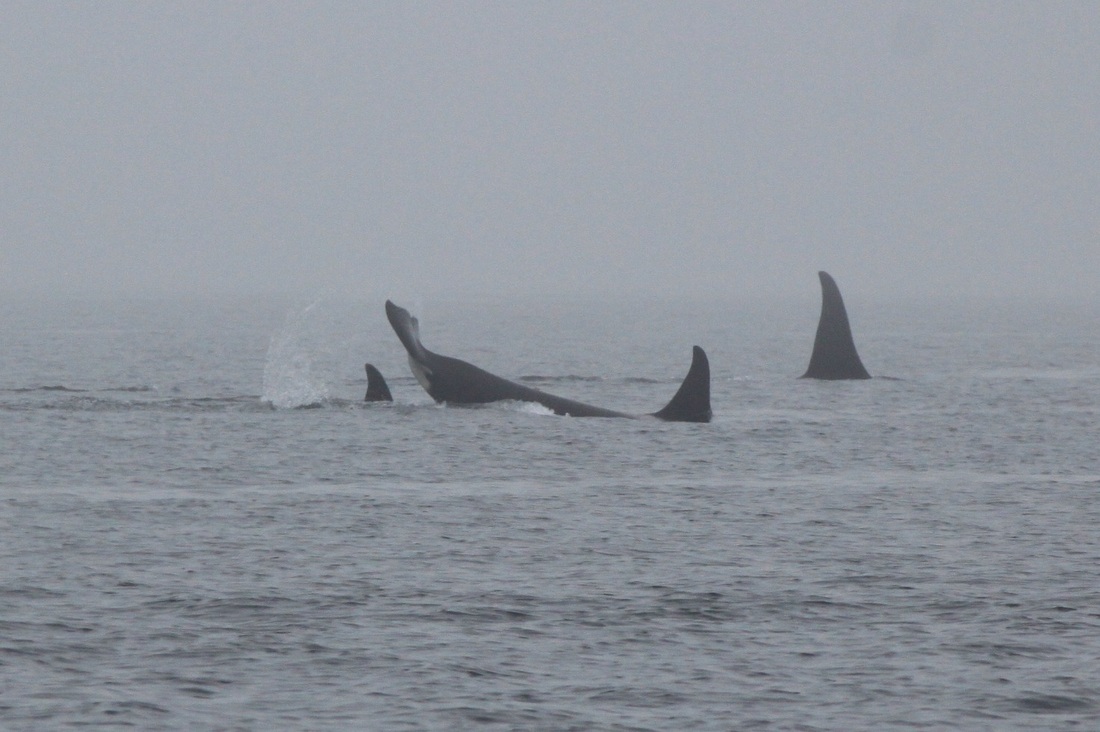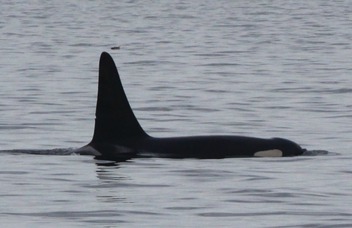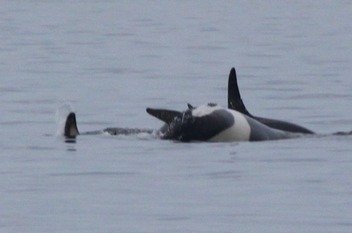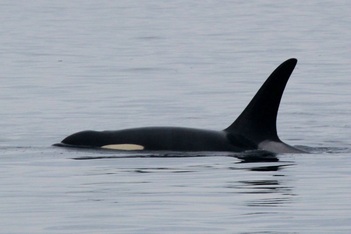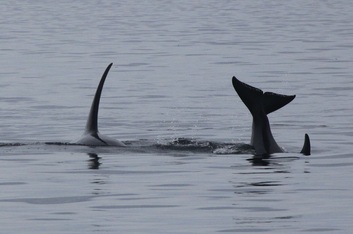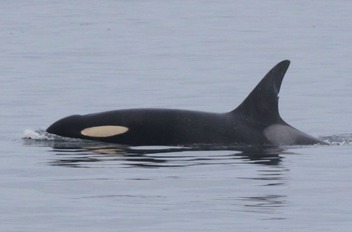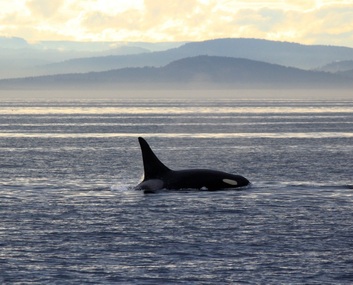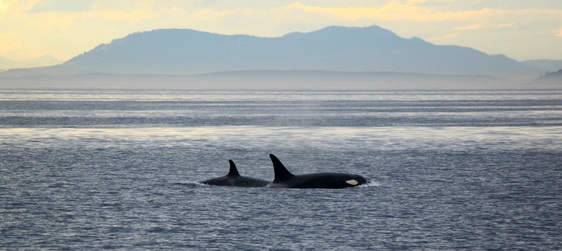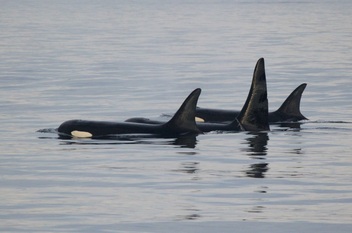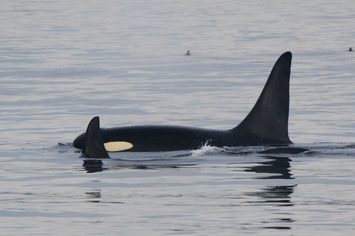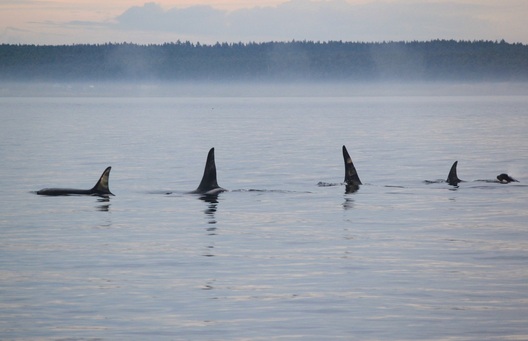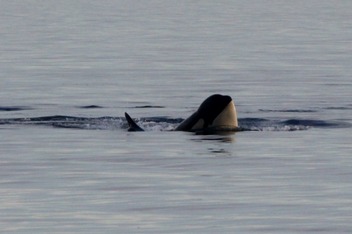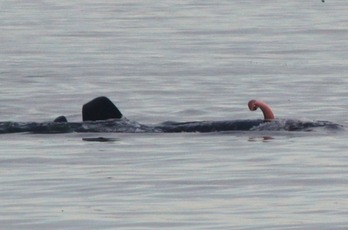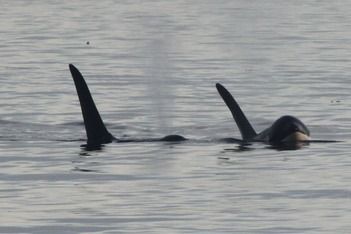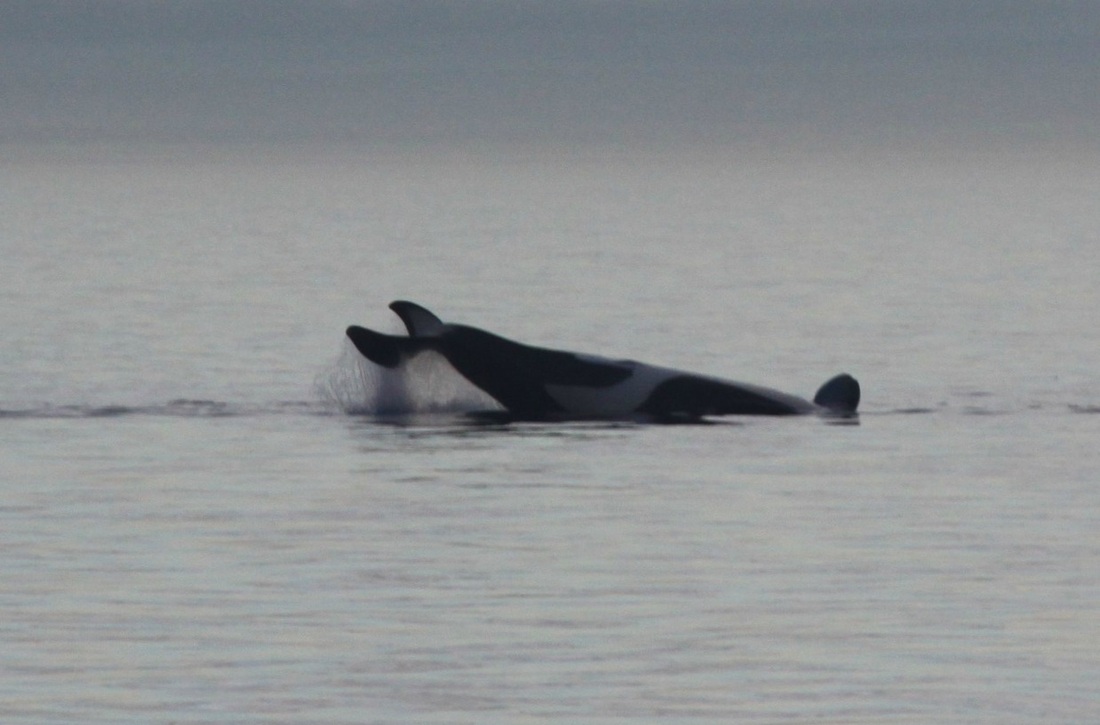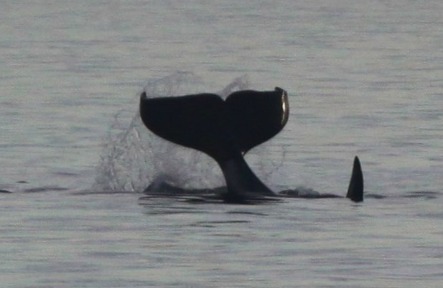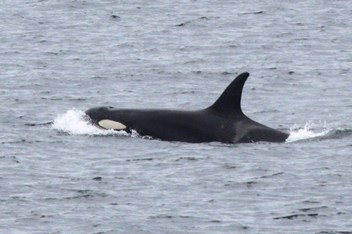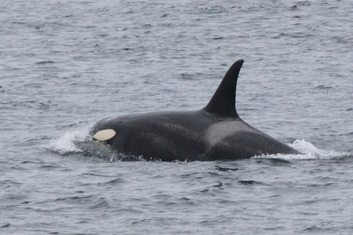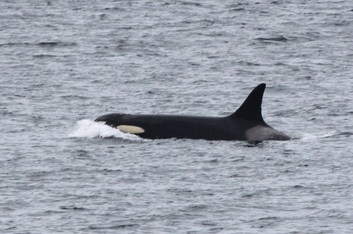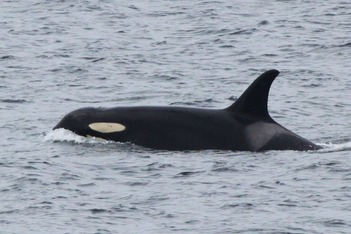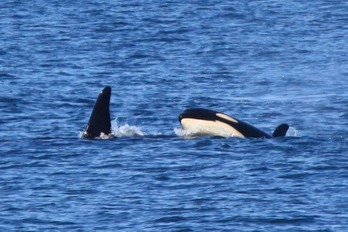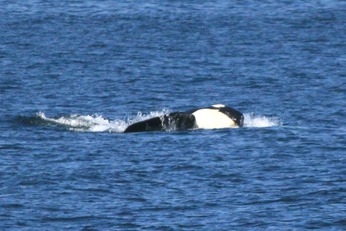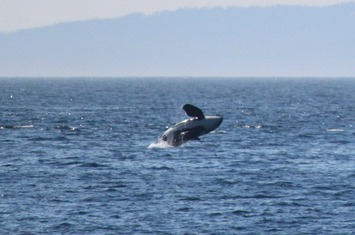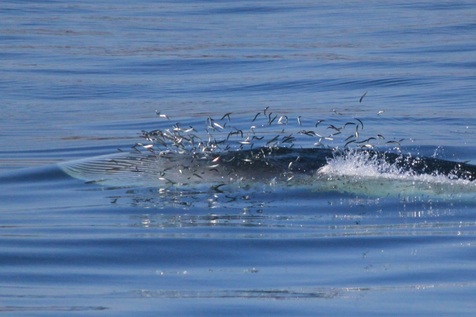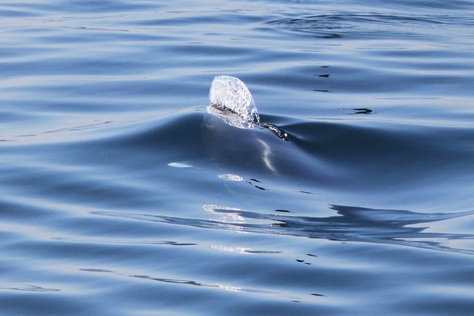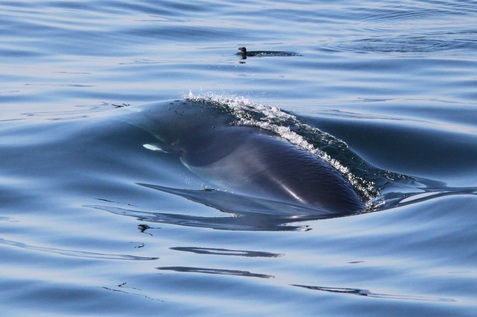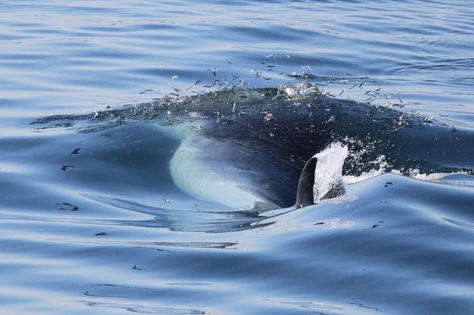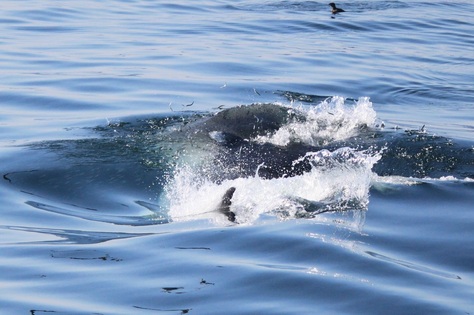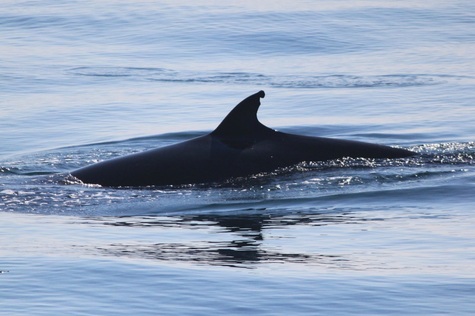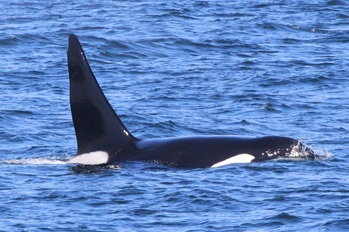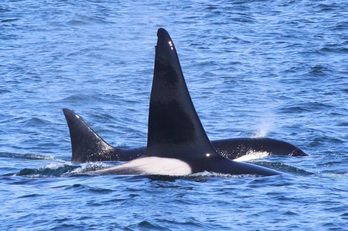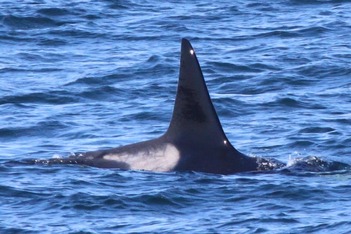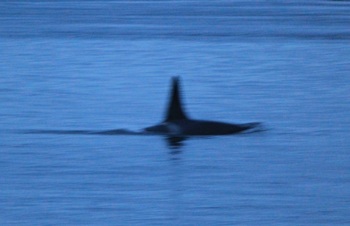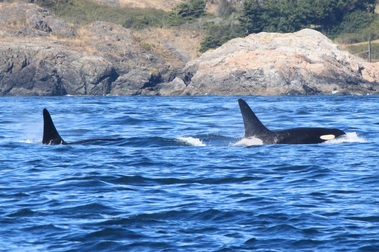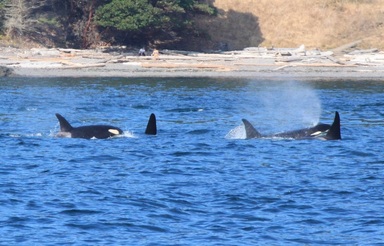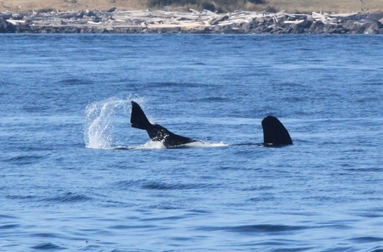I had never seen the Northern Resident orcas before so this whole trip was very exciting for me. Currently at 265 members, the Northerns have been doing a lot better than our Southerns, who are at only 81 members now. Although these two resident populations are very similar, eating only Chinook salmon, and their ranges can sometimes overlap, they still do not mate with each other. We were able to see four matrilines from the Northern Resident population; the A8's, A23's, A25's and A30's.
The A8 family is from A5 pod and named after Licka A8, who was estimated to have been born in 1953 but passed away in 2001. Now this matriline is made up of Licka's two daughters Havannah A28, born in 1974, and Sonora A42 who was born in 1980. Sonora now has four offspring; son Surf A66, born in 1996, Current A79, born in 2004, daughter Cameleon A88, born in 2008 and a new calf born this year.
The A23 matriline from A5 pod, is named after Stripe A23, who was thought to have been born in 1947 but passed away in 2000. Now the family is made up of Ripple A43, born 1981, her brother Fife A60, born 1992, Ripple's daughter Midsummer A69, born 1996, and Midsummer's calf named Fern A95, who was born in 2009. On July 27th, 2003, Fife was injured by a boat propeller. The prop scars along the right side of his body can still be seen. Corky A16, currently at Seaworld San Diego, was captured from this matriline on December 12th, 1969. She is the last remaining Northern Resident in captivity. She was about 3 years old when captured and has experienced seven unsuccessful pregnancies, with no calf surviving more than forty six days. No orca has lasted longer in a tank than Corky. Lolita, captured in 1970 from L pod, and the last remaining Southern Resident in captivity, has spent one year less in captivity than Corky but is the oldest orca in a tank.
The A25 matriline, also from A5 pod, and named after matriarch Sharky A25 (1971-1997), has just two members left; Surge A61, born in 1994, and his niece/nephew Codero A85, who was born in 2005. In the summer of 2011, Surge's sister Nodales A51, along with her baby born in 2010 called A98, had passed away. Surge and Codero now travel with the the A23's. Hopefully Codero is a female so the matriline can be continued on.
The A30's, from A1 pod, are named after the matriarch Tsitka A30, who was estimated to have been born in 1947, but passed away this year. The family is now made up of Tsitka's son Blackney A38, born in 1970, his younger brother Pointer A39, born 1975, their younger sisters Clio A50, born in 1984, and Blinkhorn A54, born in 1989. Both females have offspring of their own now. Clio has a daughter named Bend A72, born in 1999, Klaoitsis A84, born in 2005, and Alder A99, born in 2011. Blinkhorn has a daughter named Cedar A75, born in 2002, Cutter A86, born in 2006, Cypress A93, born 2009, and a new calf born in 2013. Blinkhorn also became a grandmother in 2012 when Cedar had her first calf.
We headed out on a whale watching boat in the early morning to go see the Northerns. It was sunny but fog covered most of the area. Through the fog, I could occasionally see tiny islands appear and then get absorbed back in. Dall's porpoise darted in and out of it too, some of them even bow rode! I could also see the tails of humpback whales as they fluked all around through the mist as well. Then suddenly we were with orcas! It was the A30's! Blackney A38, the male I had always wanted to see since I first became interested in the orcas, appeared through the fog and came right over to us!
While standing on a cliff near the lab on the 24th, my mom and I could hear one of the many wonderful volunteers we met yelling "ORCAAA ORCAAAAAA!!" Around the cliff right beneath our feet came the A30's, the water so clear we could their entire bodies under the water.
Please do not use my photos without permission. Just ask :)
